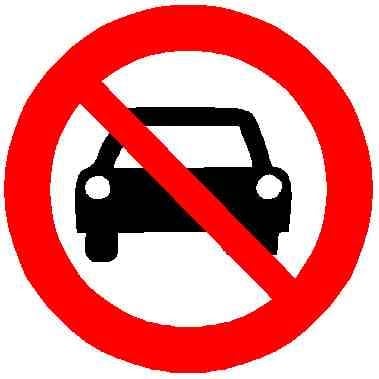The cause was easy enough to identify: Data parsed by Kuhls and her colleagues showed that drivers were speeding more, on highways and on surface streets, and plowing through intersections with an alarming frequency. Conversely, seatbelt use was down, resulting in thousands of injuries to unrestrained drivers and passengers. After a decade of steady decline, intoxicated-driving arrests had rebounded to near historic highs.
… The relationship between car size and injury rates is still being studied, but early research on the American appetite for horizon-blotting machinery points in precisely the direction you’d expect: The bigger the vehicle, the less visibility it affords, and the more destruction it can wreak.



And because the roads are not designed to keep traffic at safe speeds, and don’t separate traffic from pedestrians and cyclists sufficiently, when those morons do something moronic they kill someone
Infrastructure can fix a lot of this problem - Australia is like mini-America in so many ways, but we allow speed cameras and red light cameras which reduce speeding marvelously, though I have been tailgated by someone offended I was only going 80km/h* in the 80 zone. They passed me illegally and unsafely
Even the fixed cameras do good work, even when everyone knows where they are as it’s hard to speed right after them as slow cars move into the fast lane to pass glacial traffic
I point at the bike I ride as a reason cars give me space, it’s a carbon fibre recumbent. Since it looks odd, people see it. But the bike lane is protected by paint on the route I mostly ride, and one driver was so busy looking at my odd bike that they went out of their lane into the bike lane. Luckily there was no cyclist just that distance in front of me - that’s a pretty regular person, driving mostly safely, but screwing up. If the bike lane was protected by a kerb the car would’ve been deflected.
*I calibrate my speedometer to GPS speed, so it’s accurate
Here in Canada I’ve noticed we are starting to use cameras as well, the only issue is there are lots of signs before it is installed and lots of signs when it is installed. That way you know where you can speed and where you can’t speed, which is usually just 1 or 2 intersections of cameras… It seems like a small improvement but they are too easy to avoid, especially for locals. Imagine if a traffic cop had to walk down the road and put a little sign up that says “radar trap ahead” before doing any radar.
My town has mitigated that problem by putting a mobile camera just after the fixed camera. The sign for the mobile camera is hidden by the slow traffic, but they catch all the people who speed up just after the fixed camera
People are now afraid of speeding anywhere around the cameras
I’ve also heard of arrays of cameras being used along an entire street. So even if you aren’t speeding at one camera, it will know your average speed across the whole street and if you were speeding between cameras.
Yep. Average speed cameras. They work great on roads with no exits or turns for a while. They detect your time entering the zone, and the time exiting and work out your average speed
They don’t work on city streets as 1 minute at a red light, or even 15 seconds traversing a roundabout, messes up the average
We also have aerial speed checks - a plane circling above a highway identifies speeding cars and radios to police ahead.